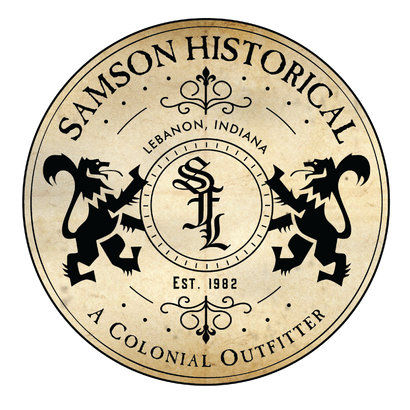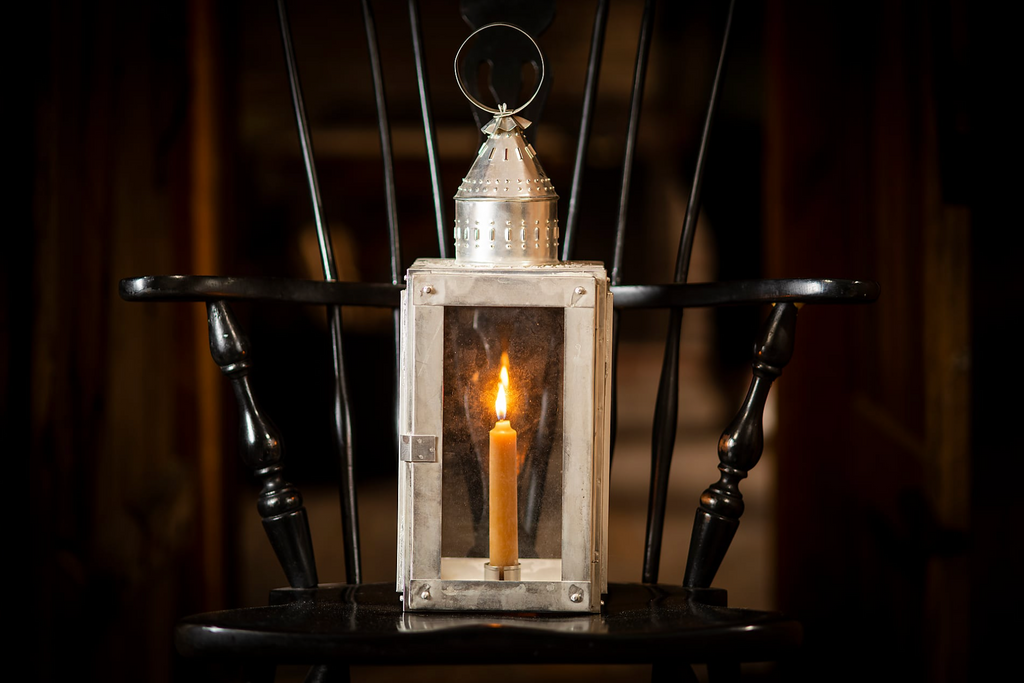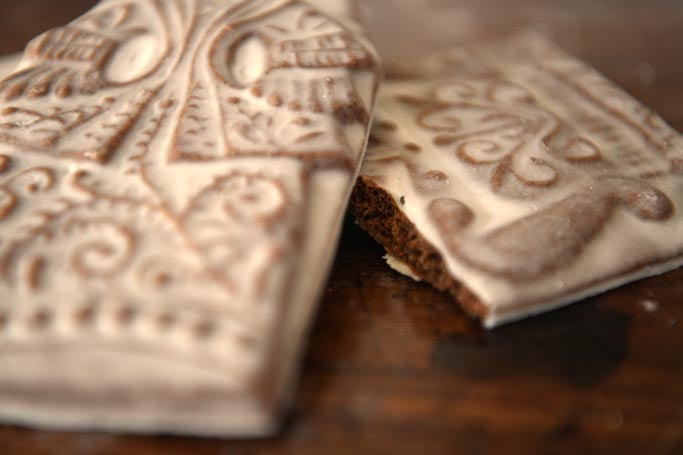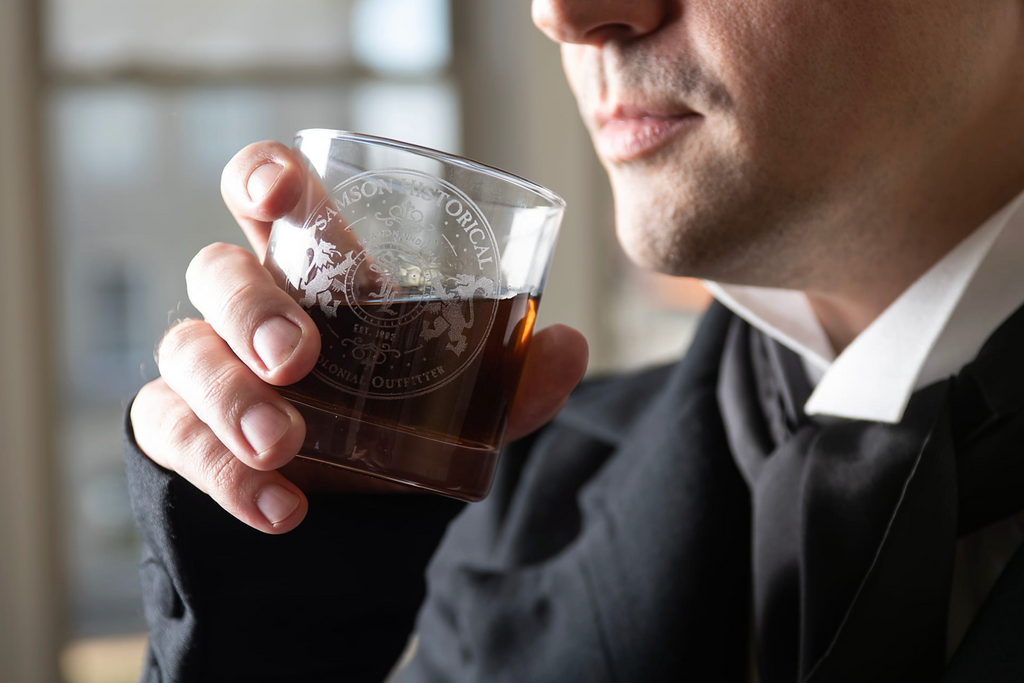Men’s Clothing
Women’s Clothing
Children's Clothing
The Wine Trade
by Hannah Reece 12 min read

By: Katherine Waters
Understanding the geographic location and climate of where a particular wine was produced can clue consumers into how their wine will taste. “Old World” wines come from one of the regions that originated winemaking, predominantly in Europe and including countries such as Spain, England, France, and Italy. Outside of Europe, Turkey, Georgia, Armenia and Moldova are also considered to be “Old World” winemaking regions. On the other hand, “New World” wines come from areas that began winemaking after having the practice imported from one of the “Old World” countries. These regions include the United States, Australia, South Africa, and Argentina, among others.
Trading wine between “Old World” and “New World” regions was especially crucial to the beginning of winemaking in America. Early settlers discovered that America’s vast landscape with a variety of climates produced many types of grapes. The grapes native to the original thirteen colonies were much different from the grapes that settlers were used to tasting in their wines; American grapes usually produced sour and highly-acidic wines. Even wine made from sweeter grapes, like the muscadine native to the American southeast, needed sugar added to make the beverage palatable. Also, the American climate was much different from what winegrowers were used to in Europe, providing an unstable growing environment and increasing the risk of mildew and rot.
The 1700s, with the formation of the thirteen colonies and the founding of America as an individual country, brought many winemaking practices and resources used in Europe to America. Some European winemakers assumed (albeit incorrectly) that American cities would be able to grow the same types of grapes that are produced in a European city on the same longitudinal line; for example, that Grecian grapes might flourish in Virginia. Therefore, early American settlers often had to rely on imported wine from Europe or be forced to source their drink from the wild and unfamiliar native grapes.
Trade with France
The European countries that established colonies in the new America all tried to control the trade with their new territories. This trade allowed the sovereign powers to stake their claim in the new world and establish their dominance over competing nations. Controlling the trade would also seal the relationship between the colony and its mother country; the colonists would be responsible for paying taxes to their homeland, and the European country would have the benefit of their colony being politically loyal to them.
France created a monopoly on all ports in their territories by instituting a rule requiring all imports and exports from a colonial port to ship only to and from its mother country. Later in the 17th-century, Jean-Baptiste Colbert initiated a policy confining all of the country’s trade with the colonies “French subjects,” or anyone who had been born in France. Many economic scholars believe that this policy became the basis for France’s trade with the colonies during the 18th century.
Unfortunately for the French, the two wars towards the end of the century, the Seven Years’ War and the War of Independence, caused the country to lose all of its North American territories. This loss also forced France to retract its strict trading policy and open colonial trade back up to non-French traders for certain products, including wine. Colonists also resented the control that their mother countries had on their trading capabilities, and France’s trade with the colonies weakened towards the end of the century while America focused more on its trade with the French West Indies.

These problems caused the colonists to turn to other French territories to import French goods, such as wine from Saint Domingue. Philadelphia-based merchants Dutilh and Wachsmuth advised a merchant in Bordeaux to not even bother to import wine to the colonies as Saint Domingue had become their primary source. Despite this, France still (illegally) sent some trading ships to America, sometimes via the West Indies, with French cargo including wine from Bordeaux.
The French Revolution at the very end of the 18th century also had a significant impact on trade between the colonies and France. France could no longer send their ships to America under the French flag and was therefore forced to make all of their cargo ships neutral. Some French merchants, particularly those from Bordeaux (one of the top French trade ports) used that opportunity to move to the colonies and become American citizens where they could use the neutral position to their advantage. Unfortunately, the wars at the end of this century severely damaged French trade due to Mauritius being surrendered to the British and Saint Domingue breaking from French rule and becoming what is now known as Haiti.
The Spanish Wine Trade
Spain started trading winemaking products with their colonies very early; in fact, the Spanish House of Trade was ordered to send cuttings from their grapevines on every cargo ship that was sent to the New World in the early-to-mid 16th century. These cuttings were sent to New Spain, a large swath of territory that included parts of modern-day Central America, California, and land around the Gulf of Mexico and Florida. Some of these cuttings were possibly used to start the production of wine in Spain’s American territories.

“Mission grapes” became famous for making wine in the El Paso region of New Mexico, mostly for producing wine for Communion. The wine trade with Spain also provided wine suitable for religious ceremonies, but shipments only came every few years and were often priced much higher than the Americans could afford. Because of this, wine consumers in Spanish territories had to rely on locally-made wine, although that wine was still sold at a high price and considered a luxury.
Although European countries, for the most part, had exclusive access to the ports located in their American territories, the Quadruple Alliance, formed in 1718 and consisting of Britain, the Dutch Republic, and France, was able to take control over Spanish American ports and start trading through those regions, albeit illegally.
Despite this loss of control, Spain was able to grow its trading systems throughout the 18th century, especially in the later decades. The Battle of Cartagena, a 1741 battle against the British, gave control of some of the Spanish territories in America back to Spain and solidified their standing as an influential power in the Western Hemisphere. Towards the end of the 18th century, Spanish ports were allowed greater access to America to increase their ability to trade, and many towns in Spain were then able to grow their manufacturing capabilities.
Spain stayed in contact with their American territories throughout the 18th century, but unfortunately, the beginning of the 19th century brought the loss of Spanish American lands and military defeats. Even when Spanish trade was at its best, it was often still much weaker than trade between America and the two powerhouse European countries, France and Britain, especially when it came to the wine trade.
Trade with England
The trade of food and beverage was a significant financial source and a cornerstone of the British economy during this time, particularly financing the military. Although England did produce its own wine, much of the wine sold and distributed in the country (and in its corresponding colonies) was imported from wine-producing heavyweights, like France and Spain. However, Britain’s position as a powerhouse in the global trading industry solidified its influence over various aspects of the wine trade, including the types of wine created and the creation of glass wine bottles.
Britain’s love of wine included many different varieties, but it especially influenced the creation and sale of Port, Claret, and Champagne. Tensions between Britain and France were always tight but had escalated to the point of war at the end of the 17th century. Unfortunately, this stifled the trade of French-produced wines, and Britain had to turn to other sources for their beverages.

When Port first started being shipped to Britain, the long journey caused the wine to go bad before it arrived at its destination. Merchants began to add brandy to the wine to help it survive the shipping, but consumers actually liked having the taste of the final fortified drink. Actually, many fortified drinks, like sherry and Madeira, were the first to make the journey abroad. Unlike regular wine that would spoil after being shipped on a hot, rocky boat, the fortified wines were improved by the heat and motion. Port sales in Britain and, therefore, in British-owned shipping ports like in the American colonies, grew immensely throughout the 18th century.
Claret, on the other hand, was made in France, so despite its immense popularity in Britain, the sale was put on hold at the end of the 17th century due to war. It was part of the catalyst for Britain’s massive impact on the glass wine bottle; thicker and darker glass meant that red wines like claret could be aged for much longer. This change in bottle reformed the winemaking process for all parts of the world. Champagne was also affected by the evolution of the glass bottle in that carbonated wine drinks could be stored in a bottle without fear of shattering the fragile glass.
Although Britain had a close relationship with its colonies and developed a substantial trading system with them, the relationship started to break down just after the middle of the 18th century. In 1764, the English government passed the Sugar Act, allowing Britain to tax the colonists for every shipment of sugar from a non-British port in the Caribbean. For the British, this would allow them to have some control over the sugar trade, which also affected the Americans’ ability to make wine. Because American-grown grapes were much sourer than European grapes, the colonists relied on the availability of sugar to sweeten their wine and make it palatable. Americans were also taxed on sweetened wines, like Madeira, that came from non-British ports.
Unfortunately for the British, this tax (compounded on other controlling policies that the British had enforced) upset the colonists and bolstered their desire to become an independent country. The colonists retaliated to the Sugar Act by boycotting British wine shipments; after the Sugar Act was passed, many Americans were encouraged only to purchase and consume American-made wines.
The Revolution did not just cut off trade between Britain and the colonies. While the Americans were building their own nation (still under British rule), the British government encouraged colonists to start developing their own wines in their new environment. Sometimes, colonists would be offered monetary gifts or other rewards from the government officials in their region for successfully producing wine. Of course, once the relationship between the colonies and their mother country soured, this encouragement came to a halt. At least for the colonists, this independence gave them more incentive to start producing wine in their own land rather than relying on Britain to provide beverages through trade.
The Effect of the American-British Wine Trade on the Modern Wine Bottle
Because colonists often had to import palatable wine from other countries, the transport of bottled wine had an impact on the bottle itself. Even though Britain did not produce much of the wine that it imported to the colonies, the glass bottles that were used for storage were made in the country, making Britain one of the biggest influences on how glass bottles were developed. Prior to the 18th century, all beverages - including wine - that were imported into America were contained in wooden barrels. This allowed wine traders to ship their products in large quantities. Wine merchants could then fill a bottle with wine from a barrel for their customers to buy. Although wine bottles were still used for storage, they were usually only seen inside of the home.
As the winemaking process developed, particularly in the 18th century, winemaking regions realized that some wines aged better when they were kept in a glass bottle and sealed with a cork or with wax. This was especially true for French wines such as Champagne. Advances in glassmaking during the 18th century also contributed to the more widespread use of wine bottles; in the previous centuries, wine bottles were typically made of a thin glass that shattered easily and definitely could not survive a long boat journey. However, newer bottles were made of thicker, sturdier glass. They could be transported or used for sparkling wines like Champagne that would burst a bottle made of thinner glass.
The wine bottles that were in use by the end of the 18th century in England can still be seen in modern-day bottles. In fact, the dark green glass that many wine bottles (particularly for red wines and other alcoholic beverages) are made of were invented during the 17th century and increased in popularity during the next 100 years. Green glass bottles were developed when many glassmakers in England shifted the types of furnaces that they used from wood-fired to coal-fired. The new colored glass was more durable than a bottle made from clear glass and allowed dark bottles to compete with both clear glassware and the sturdier stoneware.
Despite the glass bottles being pricey and difficult to ship overseas, the British glassmaking industry often exported their wine bottles to the Americas, as is suggested by the vast amounts of British glass found by American archeologists and mentioned in American historical documents. The bottles were packed in between layers of straw to prevent glass from rattling and breaking once the ship began to move. Once they arrived in America, the bottles were sold, and consumers were encouraged to bring emptied bottles back to the original merchant to either sell the glass back or have the bottle refilled and reused.
The import of British glass bottles also changed the style of bottles used for American wine. Even when other European countries used a different design for their wine bottles, American glassmakers were using the British bottle shape by the middle of the 19th century. The 18th century ushered in the standard cylindrical shape, much like modern wine bottles. Wine and cider bottles were usually tall and narrow, while bottles used for beer or porter were shorter and broader. Many of the cylindrical bottles produced in the American colonies were closer to the beer and porter shape.
British bottles also had some other influences on the style of bottles created in America. Archaeologists have compared various elements of the bottles, such as the lip around the opening, the heel (or the bottom of the bottle), the punt (or indentation) at the bottom and even the diameter to estimate the bottle’s capacity. In some instances, such as with the capacity of the bottle, there is little to no distinction between the British-made and American-made bottles. It can be assumed that the trade between England and the colonies connected the two glassmaking traditions, mainly due to the British advances in bottle making.
The American Wine Industry After the 18th century
After the American Revolution, winemaking in America underwent a shift; although most of the practices remained the same, winemakers were finally successful growing native grapes to create wine. At the very end of the 18th century, Peter Legaux, a French immigrant and winemaker, planned to establish a vineyard in Pennsylvania where he would produce what he hoped would be the first American wine. Although his first attempt at starting a vineyard would not be successful, Legaux was finally able to receive some financial aid from Congress at the beginning of the 19th century and would go on to found a successful American vineyard and a wine production organization known as the Pennsylvania Wine Company.

The American-European wine trade would also have a stake in the creation of American wine. Legaux included the native Alexander grape in his vineyard, but he also added in some vine imports from cities in France like Burgundy and Bordeaux. Some of the Pennsylvania Wine Company’s subscribes would include such names as Alexander Hamilton, Aaron Burr and Benjamin Rush.
Unfortunately, the company would die around the time that Legaux passed away, but he is still recognized as one of the most significant winemakers in the history of American-made wine. In fact, his influence on the wine industry was so significant that other winemakers would use cuttings from his grapevines to try and start their own vineyards. One of the Pennsylvania Wine Company managers, Dr. James Mease, became a native grape evangelist and is credited with being the first person to state why native grapes were superior to imported grapes publicly.
Legaux also served as inspiration for the Swiss viticulturist Jean Jacques Dufour, who both purchased vine cuttings from Legaux’s vineyard in Pennsylvania and created his own wine production company, known as the Kentucky Vineyard Society. Dufour’s company is believed to have been modeled after Legaux’s Pennsylvania Wine Company. One of the grapes that Dufour bought from Legaux’s vineyard was the native Alexander grape, which Legaux called the “Cape” grape due to his belief that the grape actually came from the Cape of Good Hope.
After a black rot killed most of the grapes in Dufour’s first vineyard, two of the surviving grapes (one of which was the Cape grape) was used to start a new vineyard. This second vineyard would end up being the first American commercial wine production, even though it ended up failing when the grapes died of fungus.
It is clear that the wine trade between the colonies and their European mother countries was the catalyst for wine production in America. Without the shipments of vine cuttings, immigration of viticulturists and determination to recreate wine production in a new environment, there would not have been much hope for the industry to succeed, if it would have been started at all. Even the production of American-grown grapes and the evolution of the glass wine bottle were affected by the presence of European wine culture in America. Once America was able to establish its own wine production, winemakers could experiment with the grapes that they grew, climates they grew them in and how they turned the grapes into wine; some were even able to make hybrids of native American and European grapes. Even as American wine production has become an independent industry, its connection to its European origins is still visible.
For our fellow wine connoisseurs, you can treat yourself to your own 18th Century drinking vessels by clicking below:
Leave a comment
Subscribe
Sign up to get the latest on sales, new releases and more …





